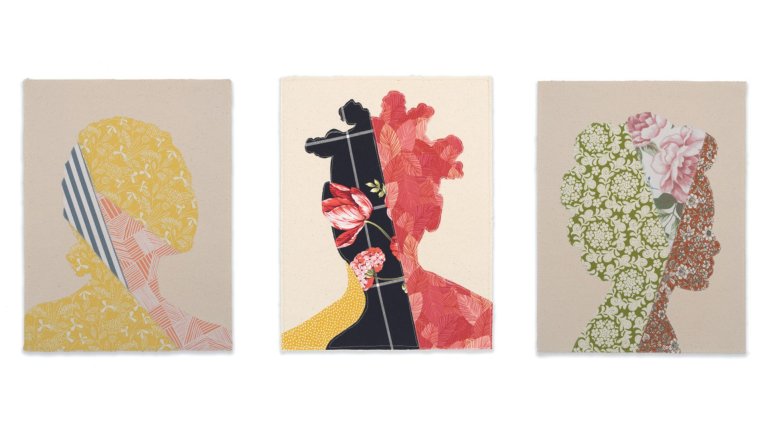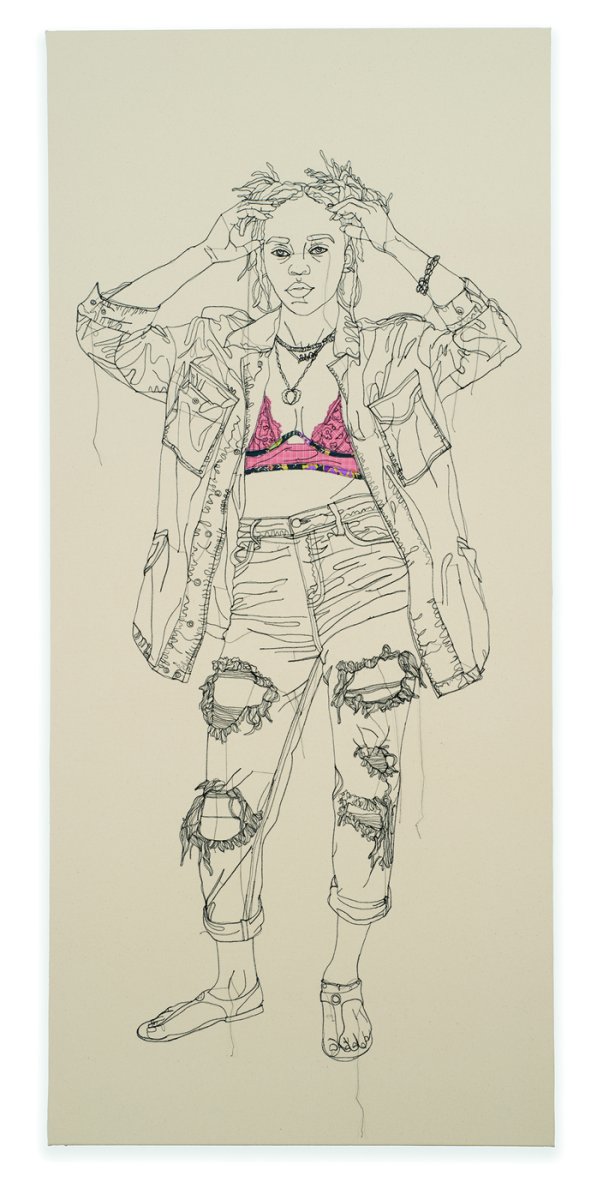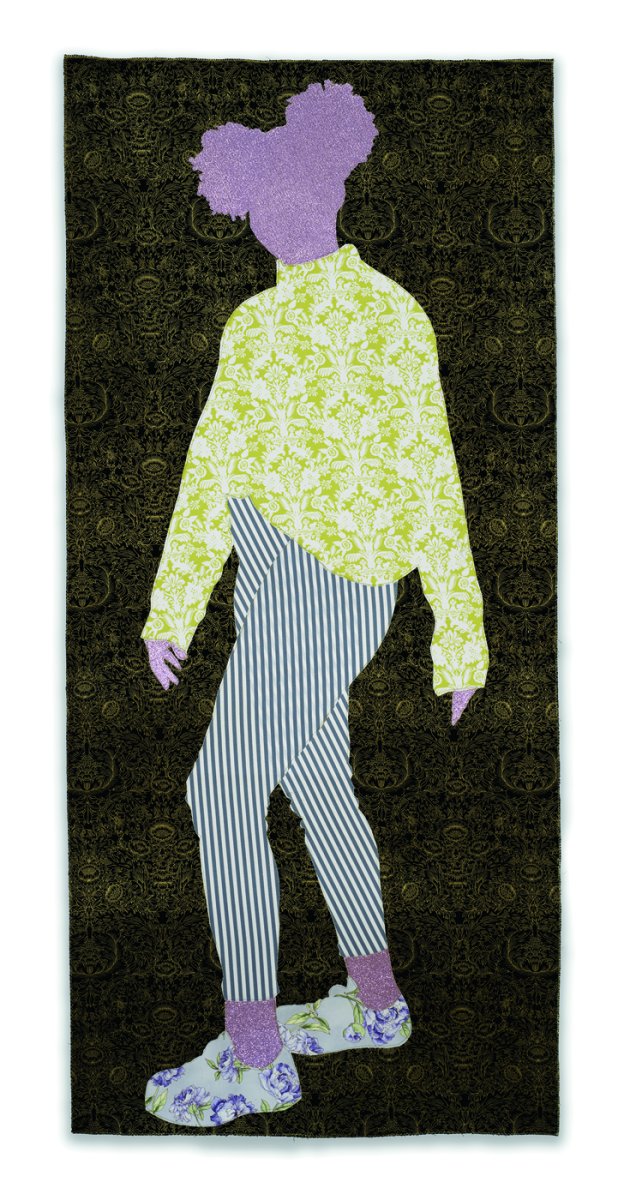Love Letters in Thread
Love Letters in Thread
Bahamian artist Gio Swaby creates what she calls “love letters to Black women” by making life-size portraits in embroidery and piecing—boisterously colorful images that, in the words of Gio Swaby: Fresh Up exhibition organizers, “highlight and celebrate the subjects’ use of fashion as unapologetic self-definition and self-expression.”
The exhibition, Swaby’s first solo museum show, brings together work from 2017 through 2021, plus more than a dozen new pieces. It debuted at the Museum of Fine Arts, St. Petersburg, Florida, in the spring of 2022. A book, with an interview of Swaby by Nikole Hannah-Jones, accompanies the exhibition.
“Swaby’s intention of creating more positive images of Black portrait sitters who are empowered to be themselves, beautiful but not idealized, is a message that my colleagues and I are honored to share with our visitors,” says Melinda Watt, the AIC’s chair and Christa C. Mayer Thurman Curator of Textiles, who co-organized the exhibition with Katherine Pill, curator of contemporary art at the Florida museum.
Watt points out that the artist chooses textile patterns that have meaning to her and her sitters—“whether that’s a fabric made in the Bahamas, a floral pattern that expresses boldness or subtlety, or a color that glows with intensity. She achieves her goal of creating positive and empowering images of Black women and girls through her great skill with line and form, endowing each subject with personality and power.”
The theme of liberated personal power and agency is underlined by how the women present themselves. “The subjects in her portraits meet the gaze of the viewer directly,” says Watt. “They pose with a combination of ease and pride.”
The curator explains that Swaby, who lives in Toronto, uses free motion machine stitching as a form of drawing on a foundation of painter’s canvas, and often combines this technique with an additional layer of appliqué to indicate a garment or accessory that has personal significance to the sitter.
While these are portraits of pride, they are also images of reality and humanity. One of their most distinctive aspects is that Swaby presents the reverse, or “wrong,” side of her stitching as the face of the work. “This reveals the loose threads that mark the beginning and end of a stitched line, as well as the areas where the bobbin thread tension is inconsistent,” says Watt. “If you’re familiar with machine sewing, you recognize this right away as one of the most relatable characteristics of her work in fiber. Swaby is interested in countering an expectation of perfection; she’s signaling a kind of vulnerability.”
As the artist has said of her subjects, “I want you to know that I see you. I see you in the full glory of your existence, apart from the flattened narrative systematically imposed upon us.”
Gio Swaby: Fresh Up
Art Institute of Chicago, Chicago, Illinois
April 8–July 3, 2023
◆

Gain access to even more information in the world of craft!
Become an American Craft Council member to receive a quarterly subscription to the award-winning American Craft magazine along with a host of other benefits.







